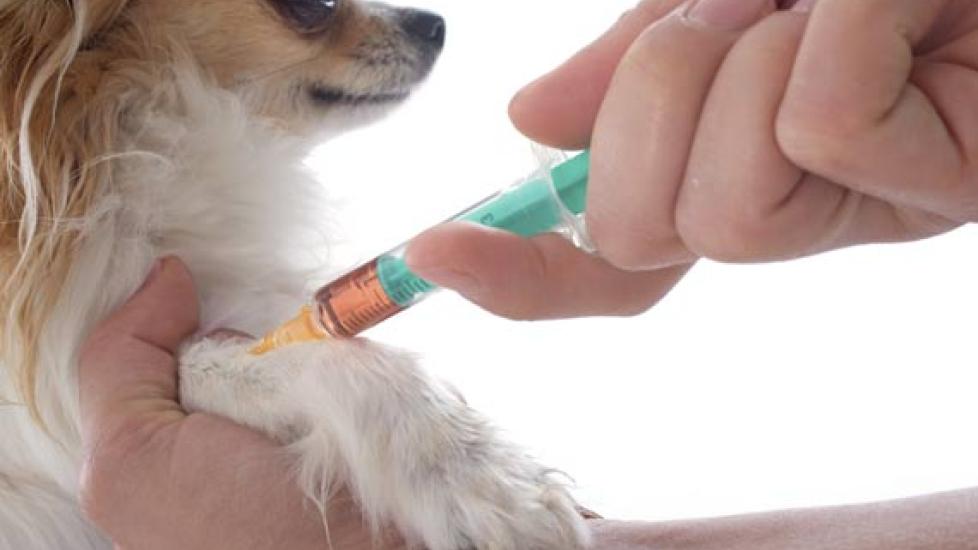Which is Better: Allergy Shots or Allergy Drops for Pets?
Which would you prefer?
- Giving your dog or cat an injection under the skin every few weeks (or going to the clinic to have it done for you)
- Giving a few pumps of liquid into the mouth twice a day
That’s the question that you have ask yourself when you’re deciding between the two forms of allergy immunotherapy that are now available for pets.
Allergy shots have been around for decades. They work by essentially desensitizing the immune system to its allergic triggers. Initially, a weak concentration of the pet’s triggers is given and the solution is gradually strengthened over time. Shots are usually given a couple of times a week at the beginning of treatment but can be spaced out if the pet responds well. It’s not unusual for dogs and cats to get a “booster” every two or three weeks for years, if not indefinitely.
The sublingual (under the tongue) allergy drops works on the same principle as allergy shots. Weak concentrations of allergens are given at the start of therapy and the concentration increases with time. The main difference between allergy drops and injections is that the drops really must be given twice a day for the foreseeable future. In people, sublingual immunotherapy is often stopped after 2-5 years with the beneficial effects continuing on, but this type of treatment is relatively new in pets and we simply don’t know if the same will hold true for them.
Of course, allergy shots and the oral drops differ in a few other ways, too.
Sublingual drops can be effective in patients who failed to respond adequately to allergy shots. Research has shown that approximately 50% of dogs whose symptoms didn’t improve with allergy shots did respond well to sublingual immunotherapy. This can be explained by the fact that the drops and injections interact with the immune system in slightly different ways.
Allergy shots are quite safe, but a potentially very serious allergic reaction called anaphylaxis is possible. It appears that anaphylaxis is extremely unlikely with sublingual immunotherapy (I have only run across one report in a dog whose symptoms were relatively mild). The oral drops have even been used successfully in pets who had previously had an anaphylactic reaction to allergy shots. Adverse reactions to the oral drops appear to be limited to oral irritation and a temporary worsening of allergy symptoms, which can also be seen with the shots.
Response rates to the oral drops and allergy shots are comparable. I tell owners that roughly half of pets respond extremely well, a quarter experience some improvement, and the final quarter have very little response at all. In general, it appears that it takes longer for allergy shots to work (3-6 months is typical) while the oral drops can “kick in” a bit quicker (1-3 months).
If your veterinarian has recommended immunotherapy to treat your pet’s allergies, you now have a choice to make. Shots or drops—it’s up to you.

Dr. Jennifer Coates
